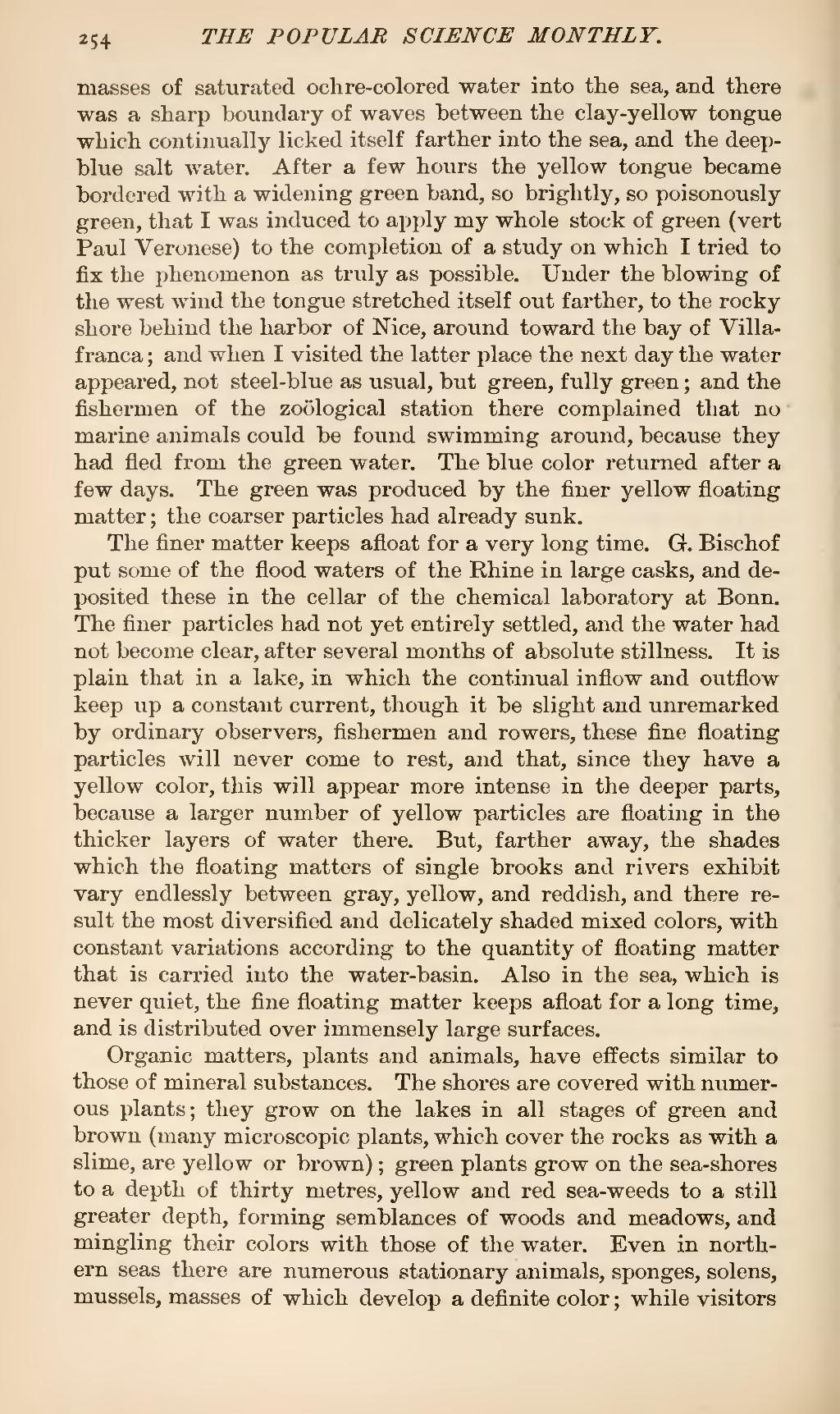masses of saturated ochre-colored water into the sea, and there was a sharp boundary of waves between the clay-yellow tongue which continually licked itself farther into the sea, and the deep-blue salt water. After a few hours the yellow tongue became bordered with a widening green band, so brightly, so poisonously green, that I was induced to apply my whole stock of green (vert Paul Veronese) to the completion of a study on which I tried to fix the phenomenon as truly as possible. Under the blowing of the west wind the tongue stretched itself out farther, to the rocky shore behind the harbor of Nice, around toward the bay of Villa-franca; and when I visited the latter place the next day the water appeared, not steel-blue as usual, but green, fully green; and the fishermen of the zoological station there complained that no marine animals could be found swimming around, because they had fled from the green water. The blue color returned after a few days. The green was produced by the finer yellow floating matter; the coarser particles had already sunk.
The finer matter keeps afloat for a very long time. G. Bischof put some of the flood waters of the Rhine in large casks, and deposited these in the cellar of the chemical laboratory at Bonn. The finer particles had not yet entirely settled, and the water had not become clear, after several months of absolute stillness. It is plain that in a lake, in which the continual inflow and outflow keep up a constant current, though it be slight and unremarked by ordinary observers, fishermen and rowers, these fine floating particles will never come to rest, and that, since they have a yellow color, this will appear more intense in the deeper parts, because a larger number of yellow particles are floating in the thicker layers of water there. But, farther away, the shades which the floating matters of single brooks and rivers exhibit vary endlessly between gray, yellow, and reddish, and there result the most diversified and delicately shaded mixed colors, with constant variations according to the quantity of floating matter that is carried into the water-basin. Also in the sea, which is never quiet, the fine floating matter keeps afloat for a long time, and is distributed over immensely large surfaces.
Organic matters, plants and animals, have effects similar to those of mineral substances. The shores are covered with numerous plants; they grow on the lakes in all stages of green and brown (many microscopic plants, which cover the rocks as with a slime, are yellow or brown); green plants grow on the sea-shores to a depth of thirty metres, yellow and red sea-weeds to a still greater depth, forming semblances of woods and meadows, and mingling their colors with those of the water. Even in northern seas there are numerous stationary animals, sponges, solens, mussels, masses of which develop a definite color; while visitors

